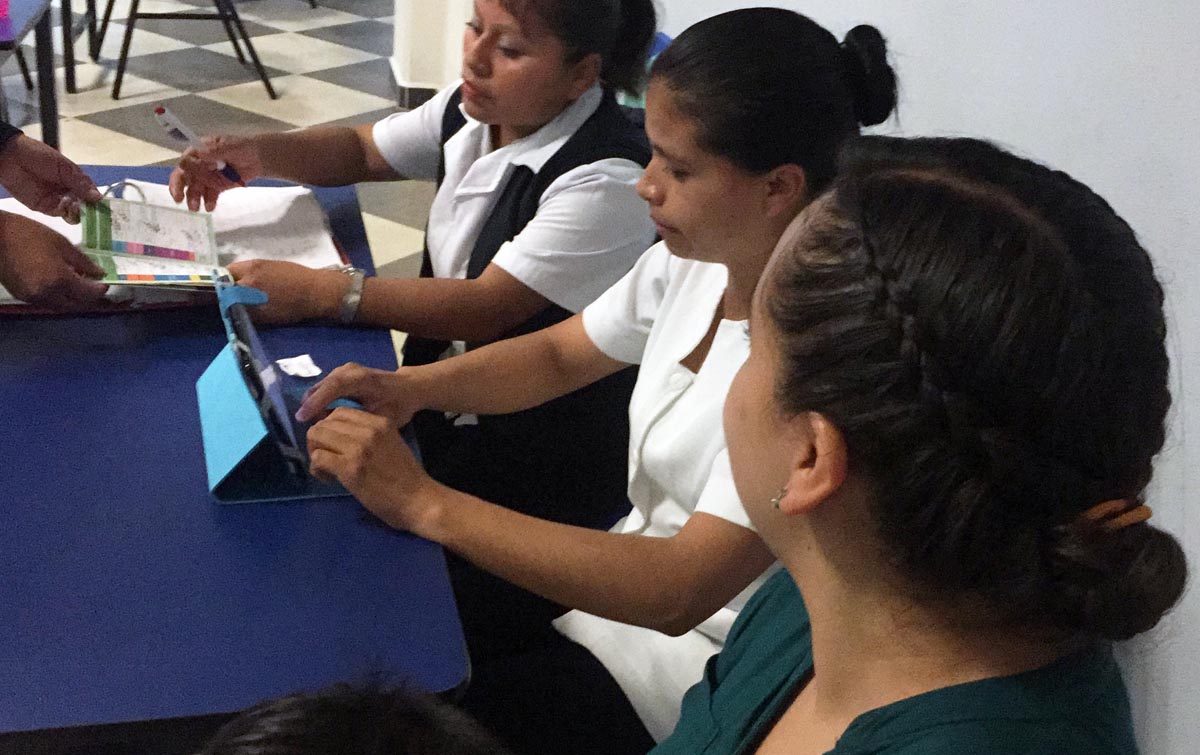A Mexican team at Carlos Slim Foundation developed the Electronic Immunization Records, already used in 8 states
Mexican engineers and educators working at Carlos Slim Foundation (CSF) created an original system for data management called the Electronic Immunization Records (Cartilla Electrónica de Vacunación, CEV), in collaboration with the Gonzalo Río Arronte Foundation and the Ministry of Health. The CEV is already used in eight states of the Republic so that doctors and nurses can capture data and access the vaccination history of users through a computer or a cell phone.
Two of the coordinators of the program, Fernando Rojas and Renée Salas, who received the ‘Vaccinate to Provide Opportunities’ award granted Sanofi Pasteur, said that by the end of this year eight other states of the Republic will be integrated into the program because the goal for the ends of 2018 is to record the data of 2 million children under five years.
The CEV is part of a larger program developed by CSF called the Comprehensive Information System on Vaccination (Sistema Integral de Información en Vacunación, SIIVAC). The CEV is already working in Chiapas, Tabasco, The State of Mexico, Mexico City, Colima, Querétaro, Hidalgo and Guanajuato.
The development has been developed and improved by more than three years and has involved many Mexican experts from different institutions and different specialties, in the field with vaccination brigades. “We have tested it for three years reviewing that it meets the objectives of the National Vaccination Program,“ said Fernando Rojas, Electronics Engineer at the National Autonomous University of Mexico (UNAM).

“Something very recent is that in each of the eight states where we are working we began to test it in specific demarcations that the authorities indicated, and we are now doing a process of expansion inside the states so that a child who was vaccinated in a community can reach a health center in another community and there they have already all the data on the vaccines received,” added Rojas, who is responsible for the architecture, operation and exploitation of the SIIVAC’s data.
“Beyond developing the electronic tool, one of the biggest challenges for the adoption of the Electronic Records is the acceptance of the vaccinators, which has required a large communication and adaptation of contents to facilitate the work of the brigades,” said Renée Salas responsible for the generation and monitoring of legal instruments, as well as the design instrumentation and follow-up to SIIVAC operations.
“The work does not end when sharing the technological tool. This is when a more important phase begins. The greatest challenge for us is to reach each of the vaccinators; so they can adopt the system as their own, and go to the communities convinced that this tool represents a better way to work. Thanks to this they do not have to fill formats again and again; they capture the information only once and it is stored”, said Salas, graduated in International Relations by the Autonomous Technological Institute of Mexico (ITAM) and Master in Studies of Peace and Conflict by the University of Sydney Australia.
“It is important to understand that these people may or may not have a professional training in health, many are volunteers and lyrical vaccinators who have learned in the daily work, but who are very interested in helping children and doing their job very well. They are people who understand the importance of vaccination and are considered public servants. These are people who make an effort every day to do their job well,” said Salas.


